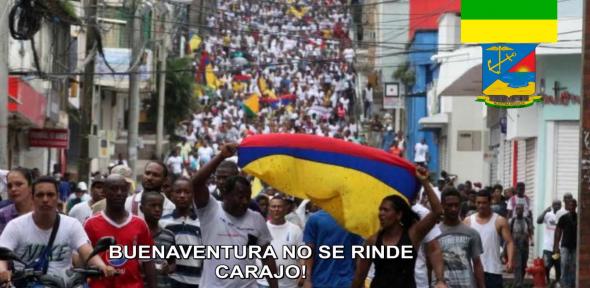
During May 2017, more than 150,000 people marched in Buenaventura, a port city of 400,000 people in the Pacific region of Colombia, known for its high levels of poverty and child mortality, unemployment and lack of education.
They hit pots and pans and held large banners with slogans such as "For the dignity of Buenaventura, For the future of our children" and "The Black People in the fight, #Soy Buenaventura, #SoyChoco", raising their fists in the same way as the Black Panthers. The march was part of a civic strike in the city, protesting against the structural conditions of poverty and exclusion of the local population and demanding improvements in water supplies, health services, education, environmental conservation, access to justice, security, territorial planning and employment. The strike blocked the main road from the port to the regional capital of Cali and managed to close commercial, educational and transport activities in the city.
During the night of May 19, protests increased in Buenaventura and some people began to loot large commercial chains in the city center, actions that were not approved by the unemployment committee. That night, the government sent riot police to the city, which caused violence in which more than 500 people were injured during these events, mostly women and children (affected by tear gas), but including people with gunshot wounds.
Although few leaders directly mentioned racism as a factor that shaped their structural conditions of exclusion, the very presence of black bodies protesting in this particular territory articulated an alternative grammar of anti-racism and became an indirect anti-racist action.
In solidarity with the protest in Buenaventura, the social organizations of Bogotá also demanded that the multicultural commemoration march of Afro-Colombian Day be converted into a national protest in support of civic unemployment. On May 21, the Cimarrón National Movement and other organizations gathered in downtown Bogotá for a march that gave voice to black protesters in a city that is the symbolic center of power of the Colombian white-mestizo state.
